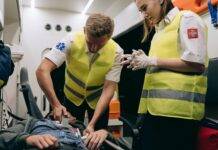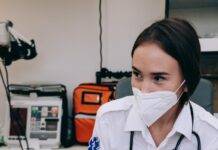
Burn Treatment: A Comprehensive Guide to Healing and Recovery
Introduction
Burn Treatment : When it comes to burn injuries, prompt and appropriate treatment can make a significant difference in the healing process. Burns can result from various sources, including heat, chemicals, electricity, or radiation. In this article, we will delve into the different degrees of burns, initial steps to take after a burn injury, and the stages of burn treatment.
Understanding the Degrees of Burns
Burns are categorized into degrees based on their severity:
1. First-Degree Burns
First-degree burns are superficial and only affect the outermost layer of the skin. These burns are characterized by redness, pain, and minor swelling. They usually heal within a few days without scarring.
2. Second-Degree Burns
Second-degree burns penetrate deeper into the skin, causing blistering, intense pain, and redness. These burns may take longer to heal and could leave mild to moderate scarring.
3. Third-Degree Burns
Third-degree burns are the most severe, damaging all layers of the skin and potentially reaching the underlying tissues. These burns often appear white, brown, or charred and require immediate medical attention.
Immediate Actions after a Burn Injury
Responding swiftly to a burn injury can minimize damage and accelerate healing:
1. Remove from the Source
If the burn was caused by heat, chemicals, or flames, move away from the source to prevent further injury.
2. Cool Running Water
Hold the burn under cool, running water for at least 10-15 minutes to reduce pain and prevent the burn from worsening.
3. Over-the-Counter Pain Relief
Take over-the-counter pain relievers like ibuprofen to manage pain and inflammation.
Stages of Burn Treatment
1. Assessment and Cleaning
Upon reaching a medical facility, a healthcare professional will assess the burn’s severity and clean the wound to prevent infection.
2. Dressings and Topical Treatments
Depending on the degree of the burn, the wound will be dressed with appropriate sterile coverings. Topical treatments like antibiotic creams may be applied to minimize infection risk.
3. Pain Management
Pain relief is crucial during burn treatment. Healthcare providers may prescribe pain medications and recommend non-pharmacological methods like distraction techniques.
4. Debridement
In cases of severe burns, dead tissue might need to be removed through debridement to facilitate the healing process.
5. Skin Grafting
For extensive burns, skin grafting might be necessary. Healthy skin from another part of the body is transplanted onto the burn site.
6. Rehabilitation
After initial healing, rehabilitation involving physical therapy can improve flexibility and functionality of the affected area.
Conclusion
Effective burn treatment involves a multi-faceted approach, from immediate actions to medical intervention and rehabilitation. Remember, burns should always be taken seriously, and seeking professional medical help is vital for the best outcome.
Bleeding Control: A Guide to Managing and Responding to Bleeding Incidents
Rescue Procedures: Ensuring Safety and Preparedness
FAQs About Burn Treatment
1. Can I use ice to cool a burn?
No, using ice directly on a burn can cause further damage. Cool running water is the recommended method.
2. How long does it take for a burn to heal completely?
The healing time depends on the burn’s severity. First-degree burns usually heal within a few days, while more severe burns can take weeks to months.
3. Will a third-degree burn leave a scar?
Yes, third-degree burns often result in scars. However, medical advancements can help minimize scarring.
4. Can I treat a burn at home without medical help?
Minor burns can be treated at home, but if a burn is deep, covers a large area, or is on the face, hands, or genitals, seek medical attention.
5. What should I do if a blister from a burn pops?
Keep the area clean, apply an antibiotic ointment, and cover it with a sterile dressing. If there are signs of infection, consult a healthcare professional.
























